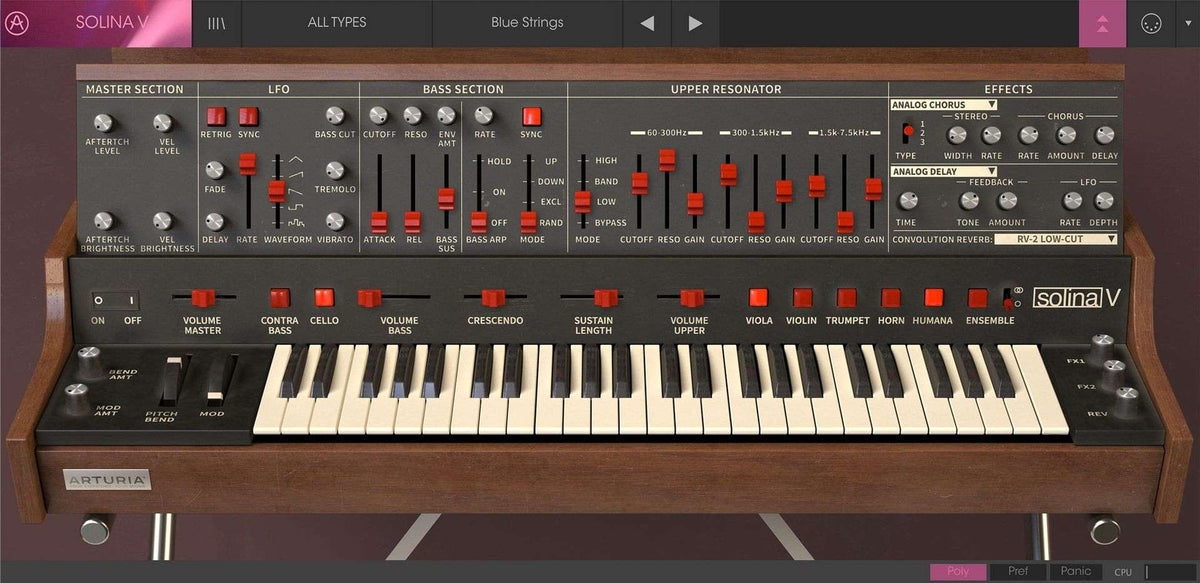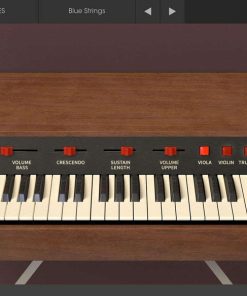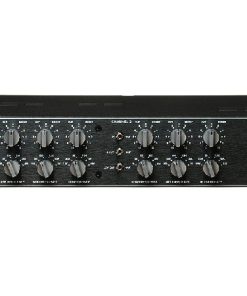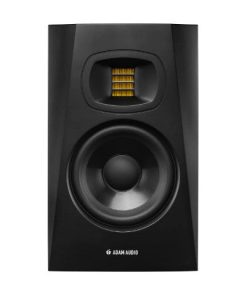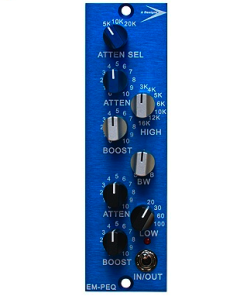Arturia Solina V2 License – Solina Strings Machine Arturia
$ 149,00 $ 59,60
Authentic orchestra machine.
Float your mind on the swirling liquid textures of the premiere string machine of the 1970s. Our unparalleled analog modeling brings this vintage icon up to tempo, beautifully faithful to the original and expertly enhanced for modern production.
StringTheory
Solina V models the hugely popular ensemble keyboard made by Eminent and later rebadged by ARP.
Chillwave, vaporwave, nu-disco, old disco, ambient, classic funk, and even trance just wouldn’t be the same without the gluey, cosseting vibe of analog string machines. Gary Wright, Jean Michel Jarre, Vangelis, Styx, The Buggles, and Parliament-Funkadelic all immortalized their sound.
The Original
We began by carefully studying the Solina Mk 1, then we created a detailed computer model. It doesn’t get any more realistic than this.
Time Capsule
The Solina is heard on more ’70s tracks than any other electronic keyboard, making it a must-have that no sample can duplicate.
Fits Your Mix
Put all the Solina’s retro deliciousness in your tracks without the hassle of finding, maintaining, and recording vintage analog gear.
More Than Strings
Get the signature sound — then discover just how far beyond that you can go thanks to the advanced synth features we added.
Before polyphonic synths,there were string machines
Needed a backing orchestra for your band? Far-out sounds to stack atop your electric piano? The Solina was your ticket.
Onstage, it opened up a new world of sound to keyboardists eager for options beyond piano, organ, and monosynth. In the studio, it brought real orchestration power to artists who weren’t in the “just hire orchestra players” league. It became a staple of prog, funk, and disco. Its sound is as ear-catching today as ever.
The history of string machines goes back to the 1960s, when keyboardist Ken Freeman experimented with a Selmer Clavioline and multiple delays, hitting on a combo that made a solitary voice sound like a section. His Freeman String Symphonizer (a.ka. Cordovox CSS) sounded incredible but was neither first to market nor most popular. That honor would go to the Solina.
Main Features
- All of the original parameters of the ARP/Eminent Solina string ensemble
- Vox Humana sound modeled after the original 1978 Bob Moog’s Polysynth
- Classic Paraphonic operation as well as selectable Polyphonic mode
- 1978 Bob Moog’s polysynth resonator section on Upper Section
- 24dB per octave resonant filter on Bass Section
- Arpeggiator on Bass Section
- LFO for vibrato, tremolo and filter modulation
- Aftertouch and velocity level controls
- Solina MK1 and MK2 ensemble modes
- 3-mode stereo chorus
- Stereo dual phaser
- Analog delay
- Digital sync delay
- Convolution reverb with 24 modeled reverbs
- 150 presets
Platform specifications
Windows
- Win 8.1+ (64bit)
- 4 GB RAM
- 2.5 GHz CPU
- 2GB free hard disk space
- OpenGL 2.0 compatible GPU
Required configuration
- Works in Standalone, VST, AAX, Audio Unit, NKS (64-bit DAWs only).
Apple
- Mac OS 10.13+
- 4 GB RAM
- 2.5 GHz CPU
- 2GB free hard disk space
- OpenGL 2.0 compatible GPU
Protection
- The software is protected by the Arturia Software Center.
Prompt Delivery and Professional Packaging
Our long-standing partnership with UPS FedEx DHL and other global carriers lets us offer a range of shipping services. Our warehouse staff is extremely skilled and will package your items according to our precise and exact specifications. Your goods will undergo an extensive inspection and be safely packaged prior to being sent out. Each day, we ship to thousands of customers in many countries. The fact that we are committed to becoming the biggest online retailer in the World is clear. These warehouses are in Europe in the same way as they are in USA.
Note: Orders that include more than one item are assigned a processing period depending on the item.
Before shipping, we will inspect thoroughly the items you have ordered. Most orders are shipped within 48 hours. Expected delivery time is between 3-7 days.
Returns
Stock is dynamic. It's not entirely managed by us since we are involved with multiple entities, including the factory and the storage. The actual stock can change at any moment. It is possible that your order may be out of stock once the order has been placed.
Our policy lasts for 30 days. We cannot exchange or refund your order if it has been 30 days from the date of purchase.
For your item to be returned it must be in its original packaging, unopened and in the condition you received it. The item must be in its original packaging.
Related products
Monitor
Monitor
Subwoofer
Microphones
Monitor
Equalizers
Recording Equipments
Monitor
Recording Equipments
Accessories
Microphones
Monitor
500 Series
Monitor Systems
Monitor Systems
Microphones
Accessories
Microphones
Microphones
Recording Equipments
Equalizers
Mic Preamp
Monitor Systems
Recording Equipments
Accessories
Recording Equipments
Headphones
Monitor Systems

